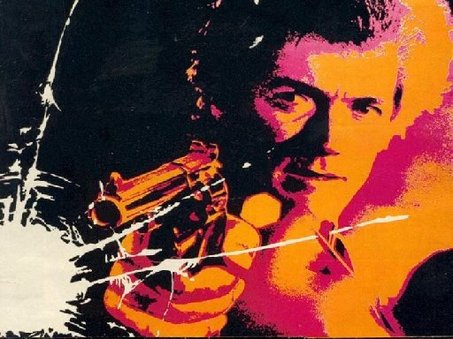“The Notebook” (2004) is a romantic film, set in the 1950’s, directed by Nick Cassavetes, staring Ryan Gosling, James Garner Gena Rowlands and Rachel McAdams. The opening sequence is very effective in the way in which it sets up the rest of the story in terms of genre, characterisation, setting, narrative and the time and place.
Firstly, the viewer is presented with a close-up of the character introduced as “Duke” (Garner). This shot enables the viewer to see clearly the age of this him so they can quickly establish who he is. Then mise-en-scene is used to emphasise the fact he is an old man by having him put on a pair of over-sized glasses, stereotypically associated with an older character. Then there is a mid shot which allows the viewer to briefly see where this character is. He is in a small room which appears to be his bedroom. There is an armchair in the corner with a checked blanket and a lamp next to it, which suggests this is where he sits of an evening, again stereotypical for an old man. Then, just before leaving the room, he picks up a book off the dressing table which the viewer perhaps associates with the title of the film, leading them to believe this is ‘the notebook’ the title refers to. This room and the furniture in it is mainly light blue, which is linked to hospitals therefore hinting at the fact he may be in some sort of care place.
In the next scene the audience is presented with a panning shot which shows that he is infact in a care home. This is shown by the walls being the same light blue as in his bedroom, the clean white floors and the people clearly dressed as staff/carers in all white clothes.
Then, a long shot is presented showing another room in this care home with other patients in it. We see Duke interact with a patient, he says “How you hanging Harry?” which the patient replies with “Well I keep trying to die, but they won’t let me” to which Duke responds “Well, you can’t have everything.” This light humour suggests that they aren’t taking their lives too seriously anymore. Also it shows that they are being looked after, again confirming they are in a care home which now appears to be for the elderly. After this dialogue, we see Duke in a queue in which he waits to receive his pills, saying excitedly to the nurse “Big day today!” which emphasises he is going to do something big, that could perhaps make a big change. The nurse then replies with “You say that everyday, you old devil.” which again presents humour. Also, it shows he has this ‘big day’ everyday, meaning he repeats his day over and over again. This could perhaps slightly confuse the audience, which engages them into the film.
The next thing the viewer sees is a close up of an elderly woman, who is dressed very elegantly and classy. The close up shot allows the audience to see she is wearing jewellery, matching earrings and necklace, which shows she is very cautious of how she looks, and likes to make herself look nice. Also, she is wearing very subtle makeup which shows femininity. The outfits everyone are wearing are fairly modern things, and what’s perhaps expected of old people to wear in modern day, which tells the audience this part of the film is set in modern times.
What appears to be this lady’s nurse comes into the background, trying to convince her to go and take a walk outside. She tenses when she hears this, which suggests nervousness, and also presents the idea of her having some sort of condition, which is why she is also in this home.
Duke then walks into this room, and seems very friendly towards this lady and her nurse by saying “hello” optimistically. The nurse replies to him with “I’m sorry, its not a good day. I don’t think she’s up for anything.” which shows she is very familiar with him, and also suggests that this other woman has ‘good’ and ‘bad’ days, which emphasises the fact she has some kind of illness. The lady says the Duke “Hello?” which shows she isn’t familiar with him, even though he is with her, leading to the belief she perhaps can’t remember him. The nurse then explains that Duke has come to read to her, which then sets up the narrative for the film. It shows that he cares about this woman, and perhaps spends the rest of the film trying to make her like him back, which confirms the genre aswell.
These factors all contribute to creating a very effective opening sequence, that leaves the viewers guessing, but also hands out enough information for them to establish all of the main features of the film.



